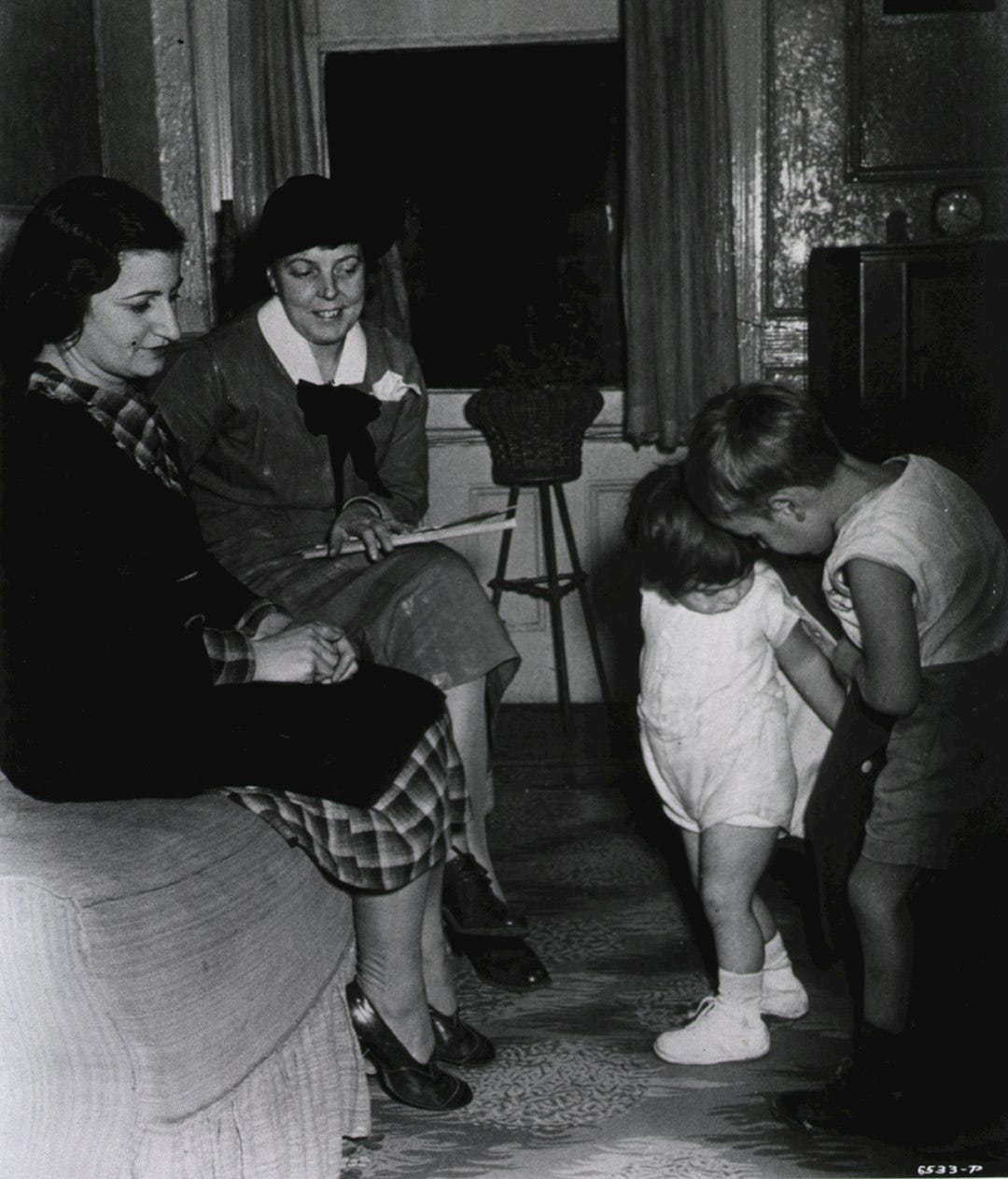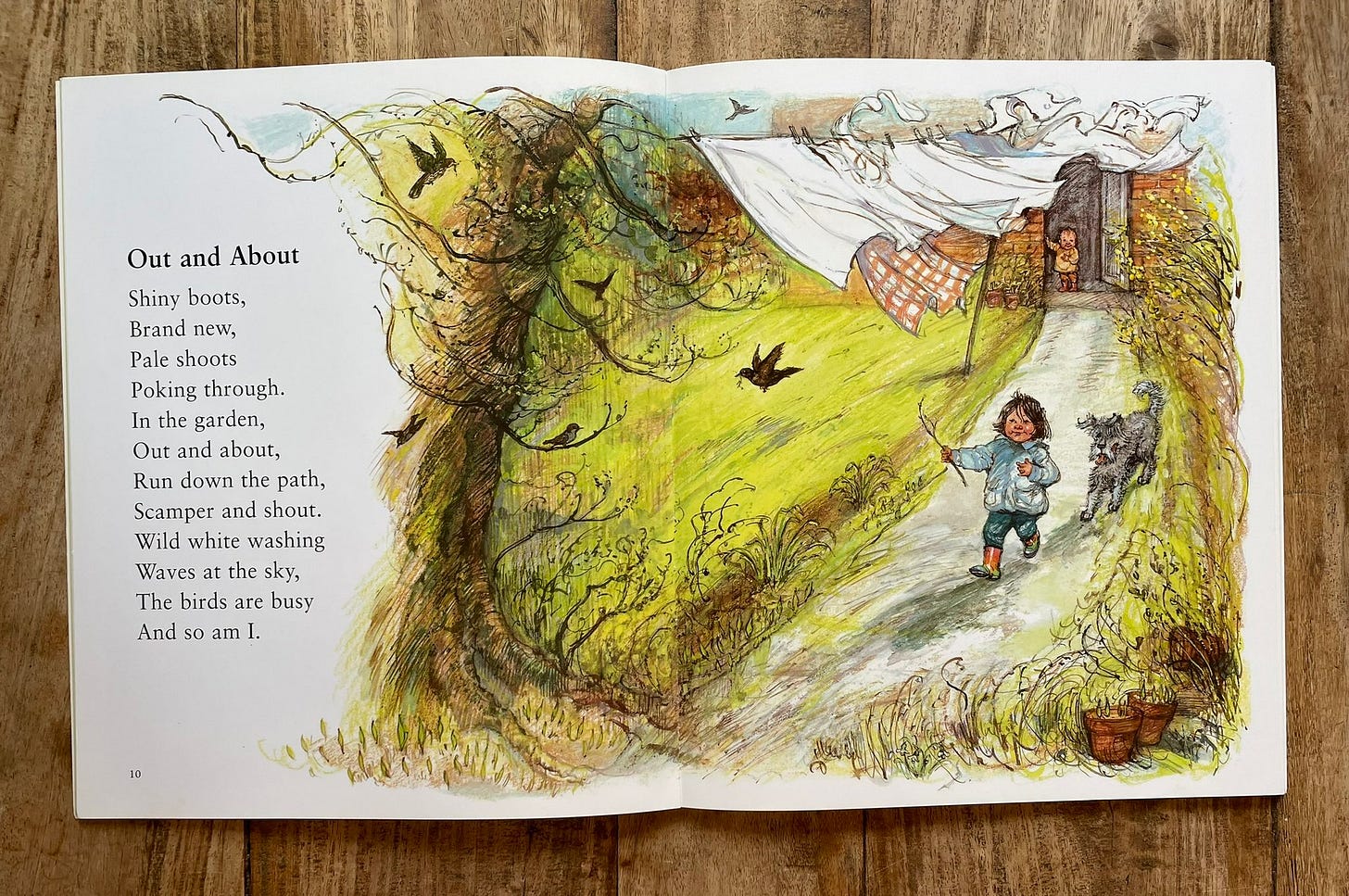I hinted in last week’s Post that I’d be sharing an example where I created empathy with the reader. So, no delay, let’s get right to it!
Hi, it’s Jackie in the Little Writing Corner in Scotland. Thanks for joining me, let’s get going!
I’m trying not to be distracted as I put this Post together as we have a pair of blue-tits tending to the nesting box that is high up on our sandstone wall. I wrote a short-listed story called The Day The Birds Died which I will try to find and pop up on my page. It’s a bit different from my womens short stories - as you can probably tell from its title!
We’ll once again be looking at one of my first stories A Spring In My Step because, well, we’re still in Spring (at the time of writing) and it was one of my first published stories that hit the mark with the womens magazine market.
If you want to know more about how that story was put together, then do click through to last week’s Post:
****
HOW TO: A SHORT STORY PIECE BY PIECE
Hi, it’s Jackie in the Little Writing Corner in Scotland and today I am breaking down one of my short stories to share the magical elements that helped it towards publication.
****
We want to ensure our story is not simply a list of things that happen to a character…and then… and then…and then. We want a bit of emotional recognition so that the reader can feel connected to the story. This happened with an observation by my main character (the MC) which was almost a throw-away line.

EXAMPLE NO.1
Here it is. See if you spot the throwaway line.
……….
“You can’t compare using your old manual typewriter in the 1970s to actually managing a whole online shopping on the new laptop!”
“Well, I do keep my brain cells ticking you know,” I smiled over my shoulder at my daughter. Honestly, you’d think I was positively ancient or something the way she went on, “You did give me a lot of help.” I conceded.
“To be fair mum, you’ve managed it great on your own.” Sandra replied indulgently.
I had to bite my tongue quite often since Sandra had her own children. She was apt to use the same encouraging tone with me, and I didn’t always like how it made me feel. Of course I loved her dearly, so I let it go.
We settled down for our cuppa on the sofa and I swear I could see the ten packets of chocolate biscuits glaring at me through the kitchen wall from where I’d hidden them at the back of the cupboard.
……….
It was the voice she used on the children.
“……She was apt to use the same encouraging tone with me, and I didn’t always like how it made me feel. Of course, I loved her dearly, so I let it go…..”
Now her daughter was using the same voice with her as she used to encourage the grandchildren! It annoyed our main character but she valued their relationship too much to say anything about it.
With the mistakes the character is making, our first impression of the grandmother/mother is as “doddery” - that’s a Scottish expression for skittish but old, I guess! She is feeling talked down to like a child. She doesn’t like it. Most readers would identify with this!
It’s a short story, so I haven’t gone to great lengths to “show” how she’s feeling. You have heard all about Show Not Tell, right? Well, sometimes in a short story of this type, it’s fine to get to the point! The fact that she goes on to say she loves her daughter dearly, so she lets it go? That’s the important bit - many will recognise that reaction. That’s the empathy right there.
Look, I’m a mum, and I’ve felt that way. My mum was a gran and I’m absolutely sure she felt that way about me now and then - I could tell by her facial expression! For sure, my MiL felt this way often about me but she valued her relationship with her son and grandkids to never say a word (mostly)!
Honestly, I loved them both and they knew it. I know they loved me too. And that’s ok.
We’re allowed for our characters not to be one-dimensional - in fact, it is crucial that they are not! So, we need to bring some real-life experiences to the story too. Sometimes it can be a seemingly throwaway line, that you just know is going to resonate with someone. That is exactly what my editor said when he accepted the story - it was one that was going to resonate with the readers.
*
EXAMPLE NO.2
In another story, The Secret Ingredient, I used the slow action of cooking in the kitchen and delivering soup to their university daughter, as a way of showing the reader what had happened to their relationship as the woman moved through menopause, struggling with her role in life:
……….
Nothing was getting through to the frozen landscape of my heart, but Aiden was trying and
now and then I had to feign a smile. He pushed lentil and carrot soup in front of me. He’d
forgotten to add my secret spices, crinkled his nose.
“Doesn’t taste as good as yours.” Aiden said with an encouraging smile.
I knew he didn’t know quite know how to approach me and that’s what was killing me.
I hated what I was doing to him, to us, but this was a version of me I hadn’t met before, one I couldn’t quite stand.
……….
Again, it demonstrated that relationships are not always just what you see on the surface. Rather than state they were going through a rough patch, I took the reader through Aiden attempting to make the soup to take to their daughter - until, of course, only his wife’s would do. (Show and not Tell). Then she simply states how she feels:
“….I knew he didn’t know quite know how to approach me and that’s what was killing me. I hated what I was doing to him, to us, but this was a verison of me I hadn’t met before, one I couldn’t quite stand…..”
I hoped this would resonate with many of the People’s Friends readers who would be of an age group to recognise this feeling. I was right - my acceptance from my editor was just lovely.
“A super read that felt very real.”
The story had a delightful, hopeful ending.
It was the shortest story (so far) that I’ve ever submitted and I don’t know if I can ever attempt to write a short story in as few as 1,000 words again. But, never say never!
I told you that these simple stories sometimes are not that simple to write! It means connecting with your authentic feelings and sharing those parts that others may also understand. This is the part of my writing that I dearly love.
Anything you can do to ensure your character rises above a stereo-type, cliche, one dimensional figure will do yourself a favour on your writing journey - whether it is for short stories or something longer! In fact, in a short story it’s even harder to fit these things in due to the constraints on length!
I hope you’ve found this helpful.

COMING SOON!
As a way to say Thank You to my Paid Subscribers, I am putting together a sheet containing details from a number of my short stories. The sheet will contain the intial thought/idea I worked with…then the element that transformed the story into a proper story worth selling. If you want to get your hands on it, please join my little group of Paid Subscribers here in the Little Writing Corner. I have lots of fun things planned!
WHAT I’VE ENJOYED THIS WEEK!
I read an excellent Post by Lauren Bravo (link at end).
The Post centres around the mums in the Shirley Hughes picture books. If you’re not familiar with them they mainly told the stories of Alfie and Annie Rose and their mum and dad and teddy, Dogger.
When I was a young mum I struggled with the picture books available which showed perfect little houses with perfectly decorated bedrooms and tidy children.
Shirley Hughes illustrations showed me real life: a bedroom with a chair covered in washing, a pile of ironing waiting never to be done, children with laces undone and messy hair. Shirley Hughes stories resonated with me in a way no others had - locking your child in/out of the house anyone? Yes, it happened to me…or rather my young daughter locked herself in the bedroom when she was only two years old. There wasn’t a lock on the door but there was an unsecured door knob. An old-fashioned pine door which had been stripped and the handle not yet secured. She pushed the door shut and pulled the metal spindle bar straight out.
I was on the other side, with no way to open the door. She was playing quite happily on the floor with her toys. I could see through the round hole that was now in the door where the handle should be. I called my husband. Would it open with a screwdriver? Was there one long enough in the house that I could use to try to turn the mechanism to open the door? Minutes felt like hours and the only one frazzled by the end of it was me!
Yes, Shirley Hughes brought real, messy, life to her books and I like to try to do that too. Bring the messy! Bring the tousled hair and unlaced shoes! Nobody is perfect. Nobody. Bring us the imperfect. Bring the messy emotions. Bring the things we can relate to.
Photos from the Twitter account of Shirley Hughes Family - now on Bluesky.
Sadly, Shirley Hughes died in 2022 but her children and grandchildren share her illustrations online and you can see more via this link:
I used to love reading these poems out loud to our children. Here are the Spring pages which are so relevant to us this April just as the blossom trees are coming into flower in my area of Scotland!
Has this Post encouraged you to bring something “real”, something messy, a tinge of empathy, to your writing this week?
As ever, thanks for any restacks, likes, comments, or subscriber recommendations. Your encouragement keeps me going!
Jackie, in the Little Writing Corner in Scotland x x
Check this out: * Link to article: The Timeless Style of Mums in Shirley Hughes Books


















Share this post